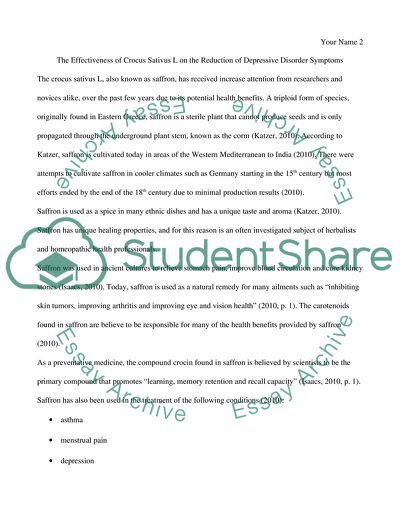Cite this document
(The Effectiveness of Crocus Sativus on the Reduction of Depressive Research Proposal, n.d.)
The Effectiveness of Crocus Sativus on the Reduction of Depressive Research Proposal. https://studentshare.org/health-sciences-medicine/1747486-does-crocus-sativus-l-saffron-assist-in-the-treatment-of-depression
The Effectiveness of Crocus Sativus on the Reduction of Depressive Research Proposal. https://studentshare.org/health-sciences-medicine/1747486-does-crocus-sativus-l-saffron-assist-in-the-treatment-of-depression
(The Effectiveness of Crocus Sativus on the Reduction of Depressive Research Proposal)
The Effectiveness of Crocus Sativus on the Reduction of Depressive Research Proposal. https://studentshare.org/health-sciences-medicine/1747486-does-crocus-sativus-l-saffron-assist-in-the-treatment-of-depression.
The Effectiveness of Crocus Sativus on the Reduction of Depressive Research Proposal. https://studentshare.org/health-sciences-medicine/1747486-does-crocus-sativus-l-saffron-assist-in-the-treatment-of-depression.
“The Effectiveness of Crocus Sativus on the Reduction of Depressive Research Proposal”. https://studentshare.org/health-sciences-medicine/1747486-does-crocus-sativus-l-saffron-assist-in-the-treatment-of-depression.


